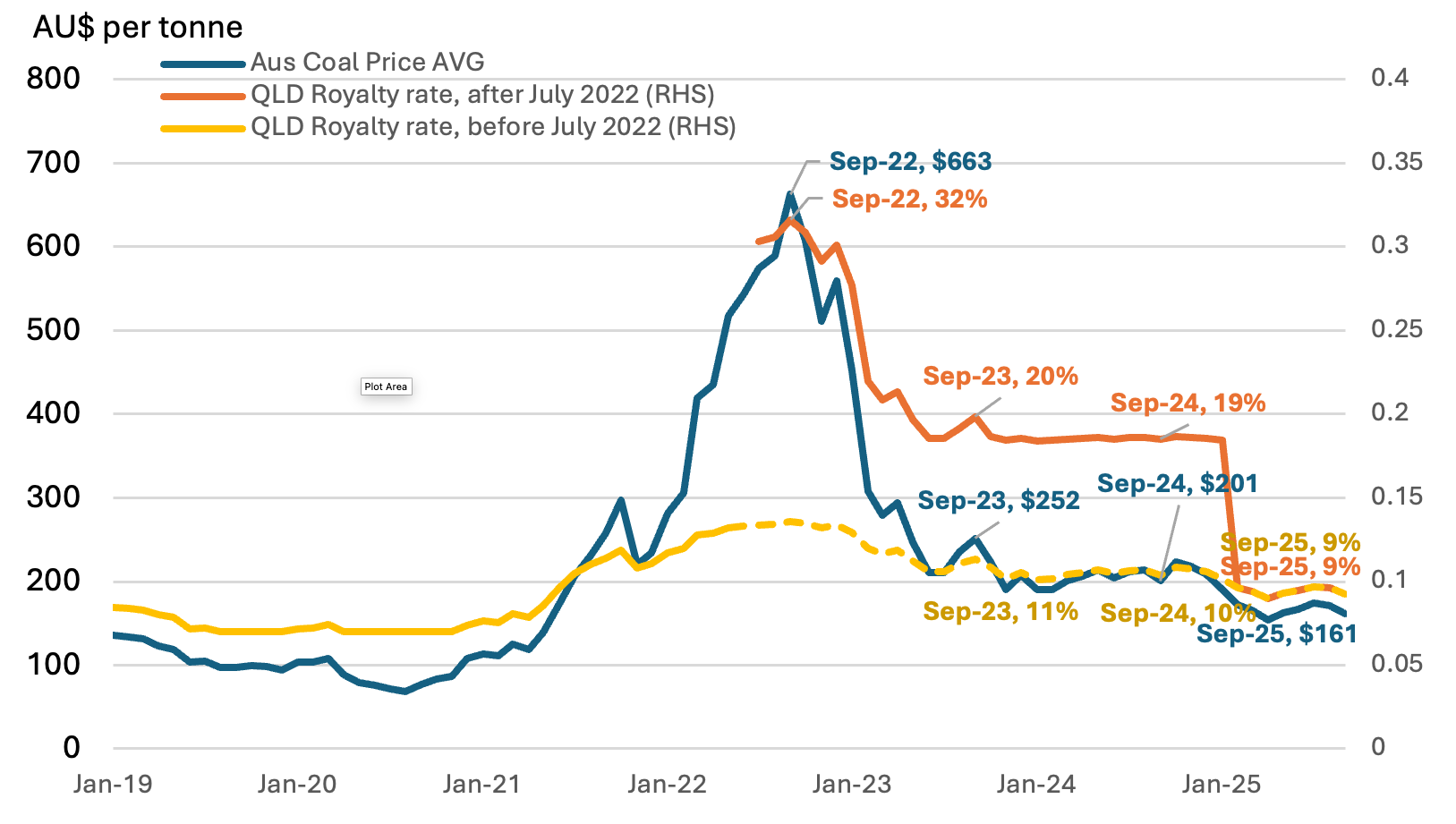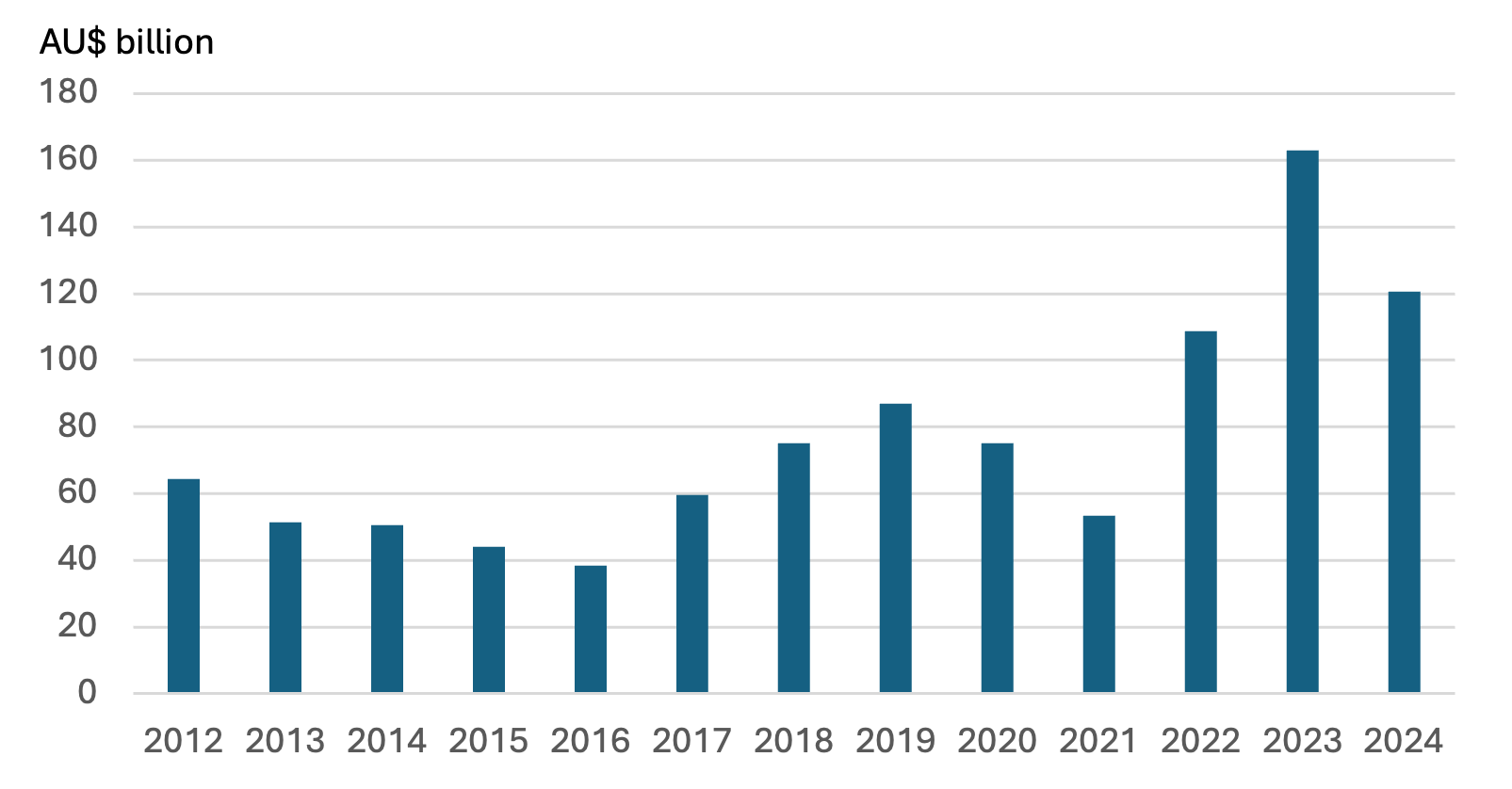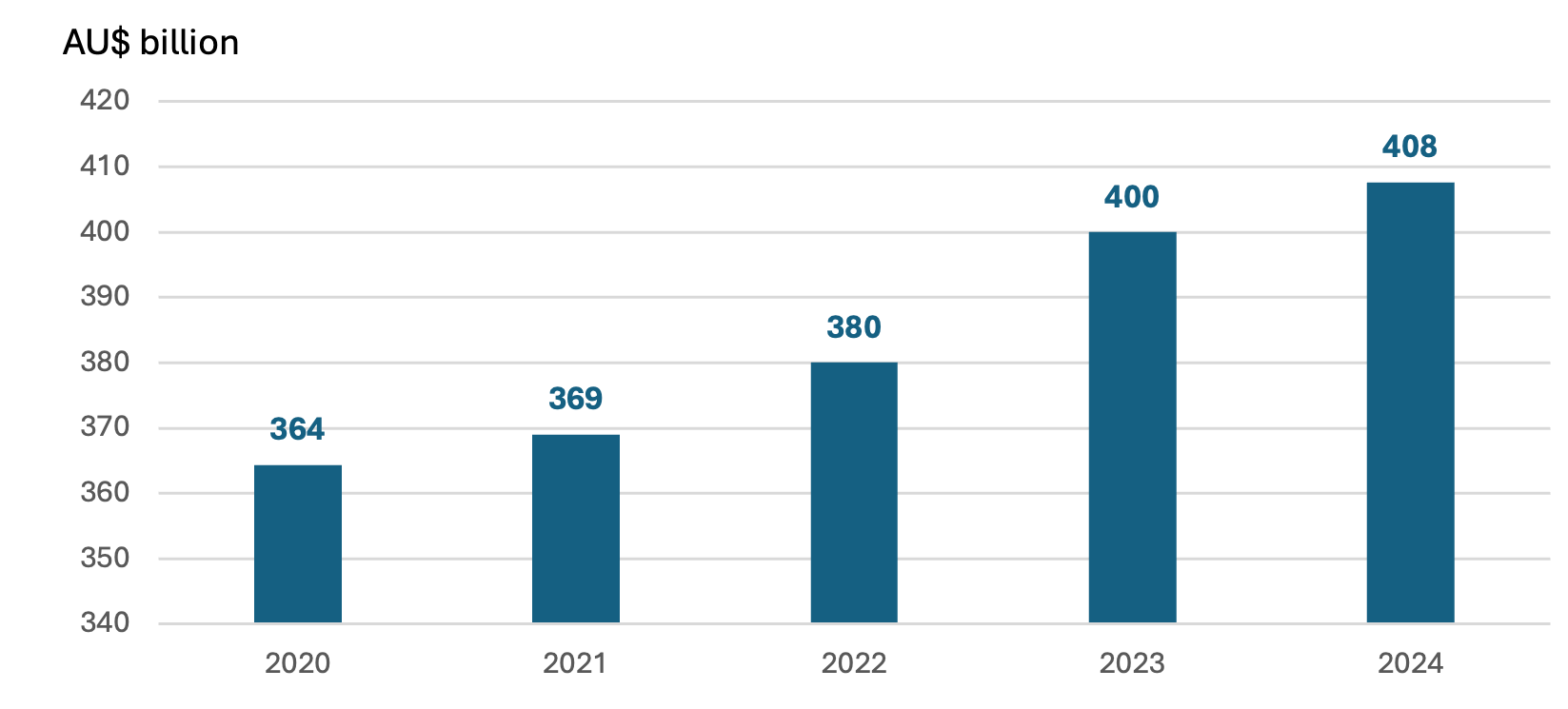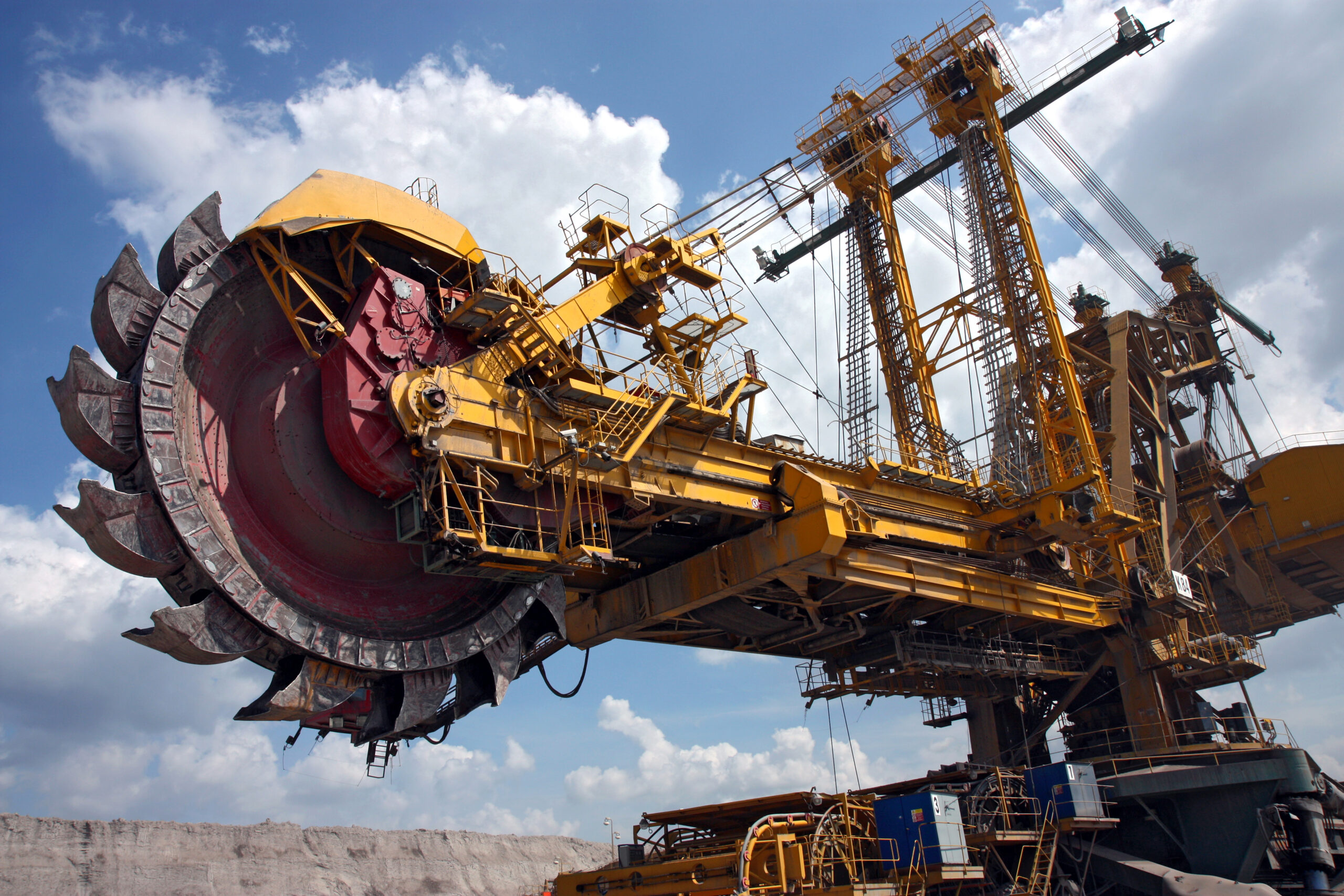Contrary to claims made by several mining companies and industry groups, Queensland’s coal royalty rate is not 40%. The average rate based on average Queensland coal prices in 2024 was actually much lower, at 20%.
Queensland’s coal royalty regime is a tiered system that applies a different royalty rate depending on the price of coal. Since 2024, coal prices have continued to fall further through 2025, meaning so too have the amount of royalties owed. Based on Australian average coal prices from January to September 2025 the average royalty rate in Queensland would be 10%. Based on the old royalty regime prior to July 2022, this would have been 9%, a difference of only one percentage point.
The change to the Queensland royalty rate implemented in July 2022 addressed the decoupling of royalties paid from coal prices, which began during the coal price spikes in 2021 and 2022. Prior to July 2022, the highest Queensland royalty rate applied was 15% for coal sold above AU$150 per tonne. This meant that the average royalties paid generally corelated closely with prices, particularly when coal sold for AU$200 or less. As coal prices spiked during 2021 and 2022 in response to global commodity supply shocks and geopolitical events, the amount of royalties paid did not increase at the same rate as prices.
Average Queensland coal prices increased AU$302 or 246% per tonne between 2020 and 2022. Based on the old royalty rate, the amount owed per tonne would have increased AU$45 or 60% during the same period. Applying the new rates would mean royalties owed in 2022 compared to 2020 increased 236%, which is more closely in line with the 246% increase in prices during the same period.
Therefore, the change in 2022 can be understood as bringing the royalty rate back in line with coal prices. As coal prices have fallen, so too have the royalties owed ( as shown in Figure 1).
Figure 1: Queensland average annual coal prices and royalty rates, 2010 to 2024, AU$
Source: IEEFA; Queensland government.
Figure 2: Australian monthly average coal prices, Jan 2019 to Sep 2025

Source: IEEFA; World Bank.
Note: Nominal prices. Prices converted to AU$ from US$ using Reserve Bank of Australia historical F1 exchange rates monthly average.
Under Queensland’s tiered system, the 40% royalty rate referenced frequently in the media is not applied to the entire value. The 40% royalty rate is only applied when coal is sold above AU$300 per tonne, and only the balance above AU$300 is taxed at this rate.
For instance, if a miner in Queensland sells its coal at AU$350 per tonne, the total royalty rate applied would be 24%, not 40%. The 40% rate would only apply to AU$50 per tonne in this instance, with a lower rate applied overall.
This is similar to our income tax system. The first AU$18,200 for most Australian workers is tax-free, meaning a 0% tax rate is applied to this amount. The remaining income is then taxed based on the tax bracket it falls within. For coal miners operating in Queensland, the first AU$100 is only taxed at 7% and then a higher rate is applied for each price bracket depending on the overall coal price.
Additionally, the changes to Queensland’s coal mine royalties implemented in July 2022 only increased the royalty rate for coal sold at more than AU$150 per tonne. Any coal sold for less than AU$150 per tonne still has the same royalty rate applied. The difference between the old and new royalty rates are shown below, along with an example of the royalty rate for coal sold at the highest monthly average Australian coal price observed in 2022 of AU$663.
Table 1: Queensland royalty rates, prior to July 2022

Source: IEEFA; Queensland Mineral Resources (Royalty) Regulation.
Table 2: Queensland royalty rates, July 2022 onwards

Source: IEEFA; Queensland Mineral Resources (Royalty) Regulation.
Multiple companies in Australia have criticised Queensland’s 2022 royalty rate change as the reason behind their decision to lay off workers and as a risk to investment in the industry. However, IEEFA recently discussed how sustained, high operating costs and labour shortages are putting pressure on margins for coalminers across both NSW and Queensland, more so than government royalty rate increases. In addition to rising labour costs, coal miners face a range of other rising cost factors. These include higher financing and borrowing costs, partly caused by increased barriers to accessing traditional finance options; increasing environmental and emissions reduction obligations; increasing frequency and severity of extreme weather; and the subsequent damages and production disruption costs.
Given that the change to royalty rates in 2022 only affects coal sold for over AU$150 per tonne, if companies are claiming this is the primary cause of their worker layoffs and financial difficulties, this calls into question why coal miners’ business models aren’t viable when coal prices are below this level. It also highlights the impact other rising cost factors are having on the sector.
Despite these rising pressures, overall Australian coal mining industry income remained higher in 2024 than in 2021 and 2022, prior to the change in Queensland royalty rates (Figure 4). Additionally, the level of foreign direct investment in Australian mining has continued to rise since 2020, with AU$44 billion received between 2020 and 2024 (Figure 5).
Figure 3: Coal mining industry income FY2012-24

Source: IEEFA; Australian Bureau of Statistics (ABS).
Figure 4: Level of foreign direct investment in Australian mining industry

Sources: IEEFA; ABS.
Note. Mining sector categorised as Australian and New Zealand Standard Industrial Classification (ANZSIC) classification “Mining”.
Overall, there is not sufficient data or evidence to support the claim that Queensland royalty rates are causing a decrease in income and investment across the industry. However, there are indicators showing the rise of other risk factors for the industry, that far outweigh royalty costs.
